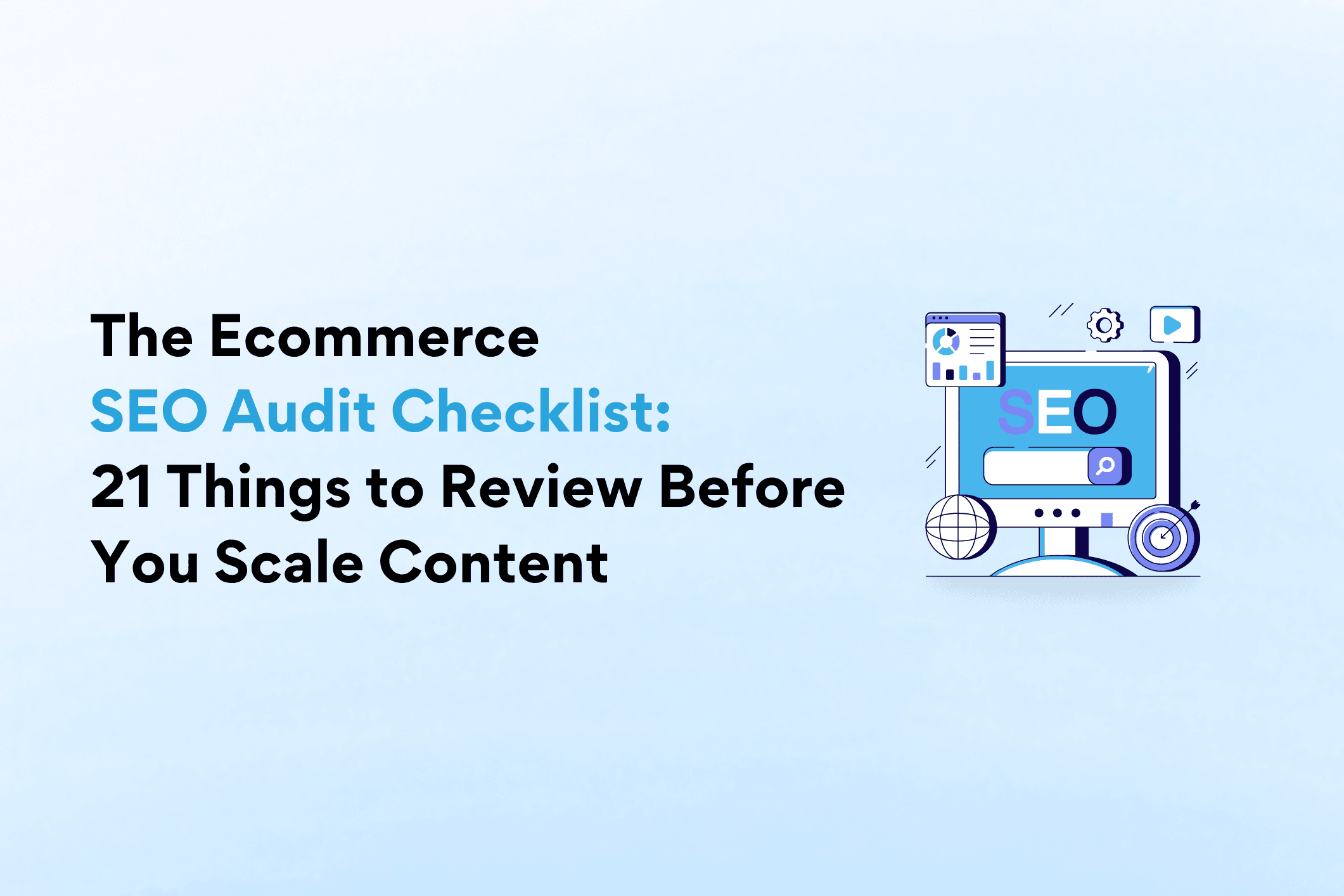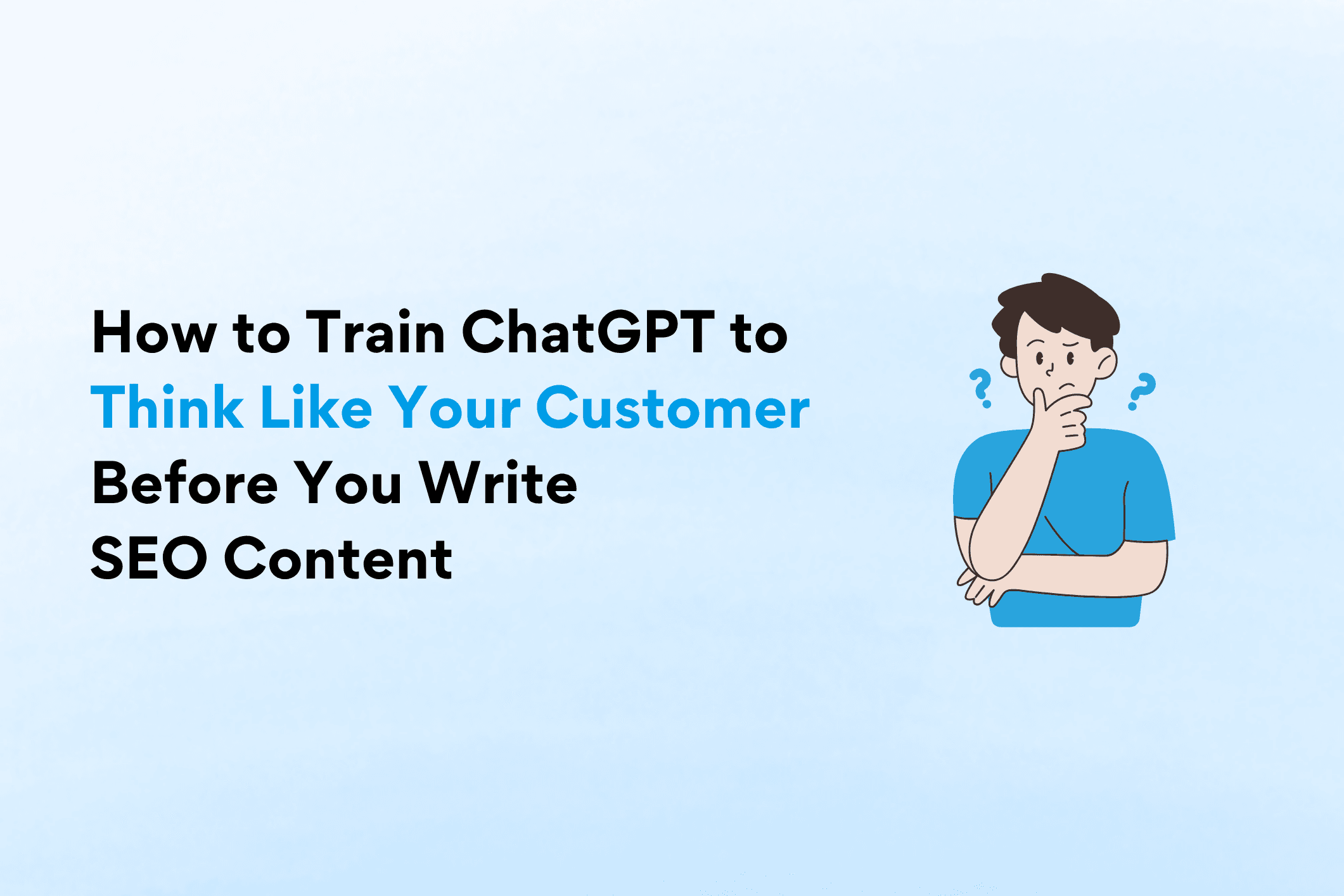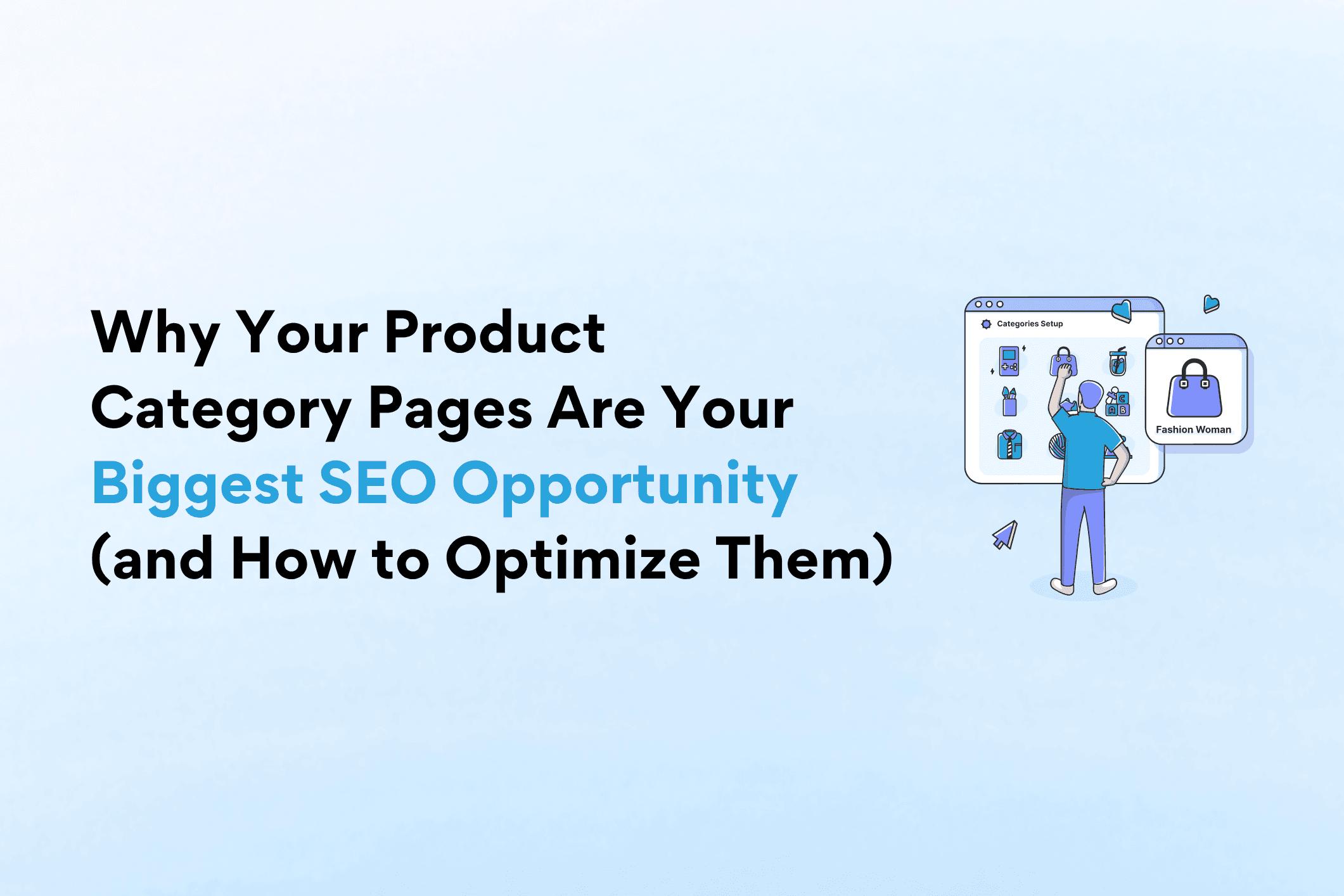I’ve worked with enough content marketers throughout my career to know when I see a good one.
The best content marketers know and understand how important SEO is and how crucial it is to have a platform that allows for easy search engine and LLM crawling and indexing.
Before scaling your content marketing efforts, it’s vital to make sure your ecommerce site is technically sound, optimized for search engines, and delivering a strong user experience. Publishing more content on a weak foundation can actually hurt performance, wasting both time and budget. A comprehensive SEO audit ensures that your site is ready to capture and convert the organic traffic your content will bring in.
This checklist breaks down the 21 most important items to review across five key areas: crawlability, on-page SEO, user experience, content quality, and technical SEO. It’s designed for ecommerce brand owners and marketers who are serious about scaling efficiently and sustainably.
Crawlability and Indexation
Crawlability and indexation are the bedrock of SEO. If Google can’t access or index your pages properly, even the best content won’t rank. You must ensure that your site’s architecture and signals clearly tell search engines which pages matter and which ones don’t.
Check if important pages are blocked by robots.txt
Your robots.txt file can unintentionally prevent search engines from crawling important content. Review it carefully to make sure you’re not blocking key category, product, or blog pages.
Review sitemap.xml setup and accuracy
Your XML sitemap is a roadmap for search engines. It should only include indexable, high-value URLs, no redirects, 404s, or canonical conflicts. Submit it to Google Search Console to aid in crawl discovery.
Review llms.txt setup and accuracy
Like a sitemap, and LLMs.txt file is a roadmap for the LLMs like ChatGPT. It should only include indexable, high-value URLs, no redirects, 404s, or canonical conflicts and should include a keyword rich description of each page, category, product, and blog post.
Use Screaming Frog or Ahrefs to find orphaned pages
Orphaned pages are pages that aren’t linked to from anywhere else on your site. This makes them nearly invisible to both search engines and users. Identify and link to them from relevant pages to improve crawl depth.
Make sure only canonical versions of URLs are indexed
Duplicate URLs, especially across product variants or faceted navigation, can dilute your rankings. Use canonical tags to indicate the preferred version of a page, and ensure Google is indexing only that version.
On-Page SEO Essentials
Even if your site is crawlable, each page still needs to be well-optimized. On-page SEO ensures that your content is structured in a way that’s understandable to search engines and compelling for users.
Title tags and meta descriptions optimized
Think of your title tags and meta descriptions as your organic ad copy. They should include relevant keywords, be unique to each page, and entice clicks from the search results.
H1-H3 hierarchy used correctly
Headers structure your content for readability and SEO. Use a single H1 per page, followed by H2s and H3s that logically break down your content. Avoid skipping header levels or using them for styling only.
Internal linking strategy in place
Internal links help spread link equity, guide users through your site, and improve crawl efficiency. Every page should be part of a thoughtful internal linking strategy, not isolated or buried.
Image alt text and file names are descriptive
Images often get overlooked in SEO. Use descriptive file names (e.g., wool-knit-sweater.jpg) and write helpful alt text to boost accessibility and surface your images in Google Image Search.
Site Performance and UX
Search engines increasingly prioritize sites that offer fast, seamless user experiences—especially on mobile. Site performance isn’t just about rankings; it directly impacts bounce rates, conversions, and customer satisfaction.
Mobile responsiveness tested (Core Web Vitals)
Mobile-first indexing means your mobile site experience is what Google evaluates first. Use tools like Google Search Console and PageSpeed Insights to identify issues with layout shift, input delay, and load times.
Site speed benchmarks met
A slow site kills SEO and conversion rates. According to Google, the probability of bounce increases by 32% as page load time goes from 1 to 3 seconds. Optimize images, defer scripts, and leverage caching to hit that sub-2.5-second mark.
Navigation and filtering tested for usability
Your navigation should be intuitive and help users find products quickly. Overly complex menus or filter systems that rely on JavaScript (and don’t render server-side) can confuse both shoppers and search engines.
Broken links and 404s addressed
Broken internal links send bad signals to search engines and frustrate users. Use crawling tools to find 404s and fix them, either by updating links or implementing redirects.
Content Review
Content is the vehicle that drives SEO growth, but only if it’s high-quality, useful, and aligned with your audience’s intent. This part of the audit helps you assess what’s working, what’s not, and where you have gaps.
Identify thin, duplicate, or outdated pages
Thin content (pages with little value or substance) drags down your overall site quality. Audit for duplicate content caused by product variants, copied manufacturer descriptions, or old blog posts that are no longer relevant.
Assess blog content quality and value
Your blog should not be a dumping ground for low-value posts. Evaluate each piece for originality, clarity, keyword targeting, and whether it solves a real problem for your ideal customer.
Look for keyword stuffing or outdated practices
Avoid overusing keywords unnaturally or relying on tactics like doorway pages and spun content (this takes me way back). These old-school techniques no longer work and can actively hurt your rankings.
Flag opportunities for new FAQ or long-form content
FAQs not only address common questions, but they’re also eligible for “People Also Ask” boxes and rich snippets. Long-form content (1,500+ words) helps you rank for more keywords and establish topical authority.
Technical SEO and Schema
The final leg of your audit should focus on the structural and semantic signals that help Google understand your site and reward it with enhanced visibility in search results.
Implement Product, FAQ, and Breadcrumb schema
These schema types are particularly useful for ecommerce brands. Product schema helps surface star ratings and price info, FAQ schema improves visibility in the SERPs, and breadcrumbs improve UX and crawl paths.
Structured data tested via Rich Results Tool
Implementing schema is only the first step. Use Google’s Rich Results Test to make sure your markup is error-free and recognized by search engines.
Ensure HTTPS, canonical tags, and hreflang (if needed)
HTTPS is non-negotiable. Canonical tags protect against duplicate content issues, and hreflang helps multinational sites serve the right language and regional content to users in different markets.
Set up log file analysis for deeper insight (optional)
For brands with large catalogs or enterprise-level traffic, log file analysis provides deeper insight into how Googlebot is crawling your site. You can use this to uncover crawl budget inefficiencies and prioritize fixes.
Scaling content without conducting a full SEO audit is like building a house on a shaky foundation. You might see short-term progress, but it won’t last, and you risk undermining your long-term growth. This 21-point audit gives you the clarity and structure to ensure your SEO is both scalable and sustainable.
For ecommerce brands competing in increasingly crowded search results (and AI-driven SERPs), getting the technical and structural pieces right is essential. Conduct this audit before every major content push, and revisit key areas at least quarterly to keep your site healthy and performing.
If you’re serious about growing your ecommerce business through organic search, don’t skip this step. Your content and your customers will thank you.
Greg is a digital marketing strategist, ecommerce owner, e-commerce marketing agency owner, and recognized leader in the D2C industry.
With 18 years of experience working with small, medium, and large organizations, Greg knows how to build and execute marketing strategies that drive growth.



